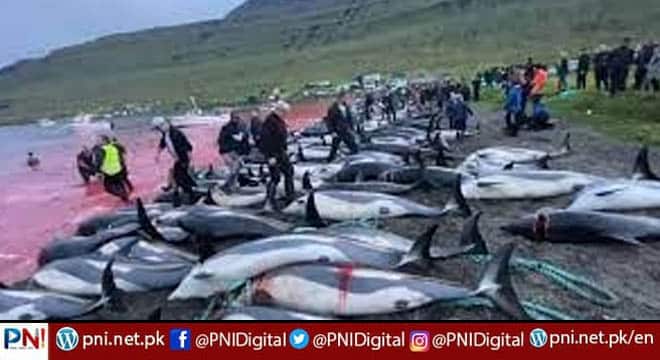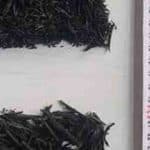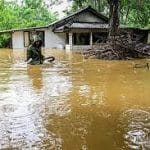Copenhagen, Sept 20 (AFP/APP):Every summer in the Faroe Islands hundreds of pilot whales and dolphins are slaughtered in drive hunts known as the “grind” that residents defend as a long-held tradition.
The hunt always sparks fierce criticism abroad, but never so much as last week when a particularly bountiful catch saw 1,428 dolphins massacred in one day, raising questions on the island itself about a practice that activists have long deemed cruel.
Images of hundreds upon hundreds of dolphins lined up on the sand, some of them hacked up by what appeared to be propellers, the water red with blood, shocked some of the staunchest supporters of the “grind” and raised concern in the archipelago’s crucial fishing industry.
For the first time, the local government of the autonomous Danish archipelago located in the depths of the North Atlantic said it would re-evaluate regulations surrounding the killing of dolphins specifically, without considering an outright ban on the tradition.
“I had never seen anything like it before. This is the biggest catch in the Faroes,” Jens Mortan Rasmussen, one of the hunter-fishermen present at the scene in the village of Skala, told AFP.
While used to criticism, he said this time round it was “a little different”.
“Fish exporters are getting quite a lot of furious phone calls from their clients and the salmon industry has NOW mobilised against dolphin-hunting. It’s a first.”
The meat of pilot whales and dolphins is only eaten by the fishermen themselves, but there is concern that news of the massacre will hit the reputation of an archipelago that relies considerably on exporting other fish including salmon.
Traditionally, the Faroe Islands, which have a population of 50,000, hunt pilot whales in a practice known as “grindadrap,” or the “grind.”
Hunters first surround the whales with a wide semi-circle of fishing boats and then drive them into a bay to be beached and slaughtered by fishermen on the beach.
Normally, around 600 pilot whales are hunted every year in this way, while fewer dolphins also get caught.
Defending the hunt, the Faroese point to the abundance of whales, dolphins, and porpoises in their waters (over 100,000, or two per capita).
They see it as an open-air slaughterhouse that isn’t that different to the millions of animals killed behind closed doors all over the world, said Vincent Kelner, the director of a documentary on the “grind”.
Follow the PNI Facebook page for the latest news and updates.








